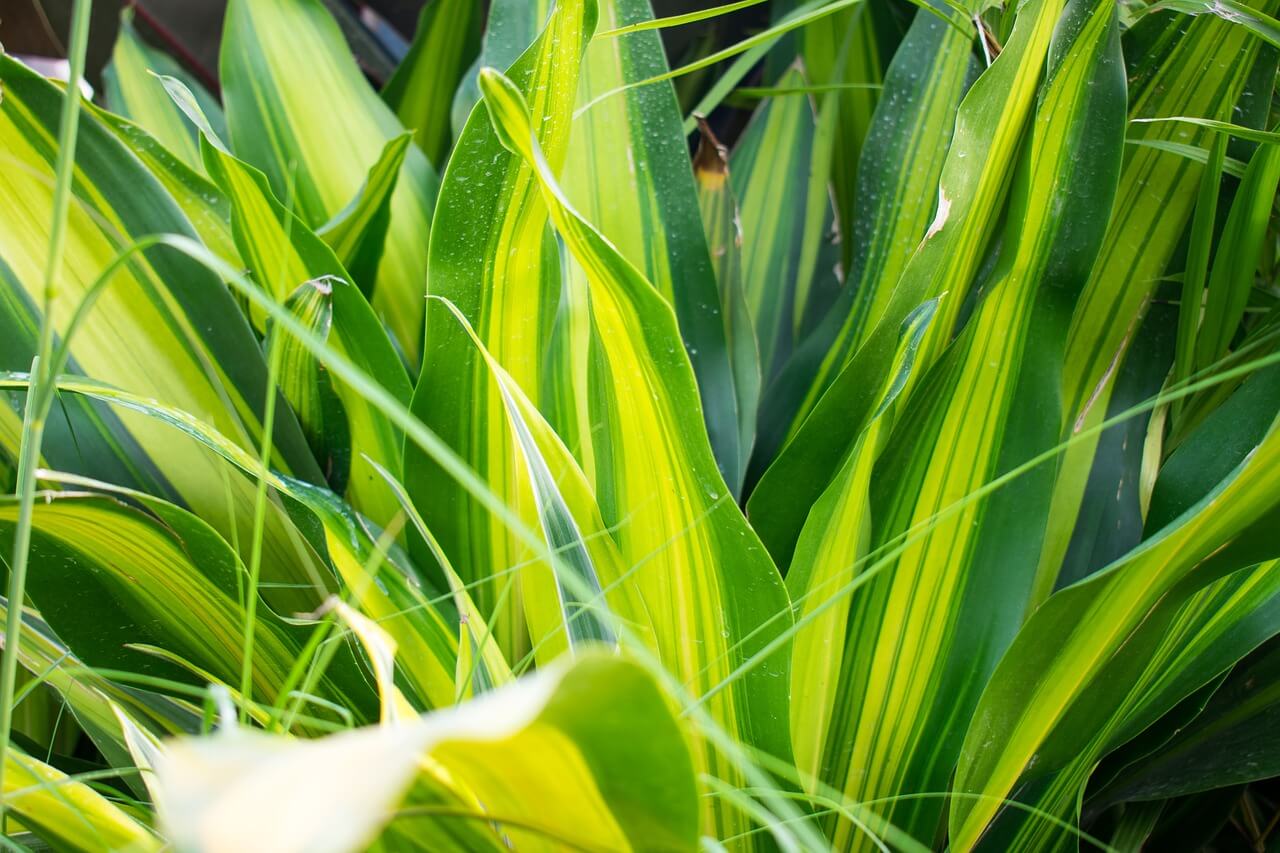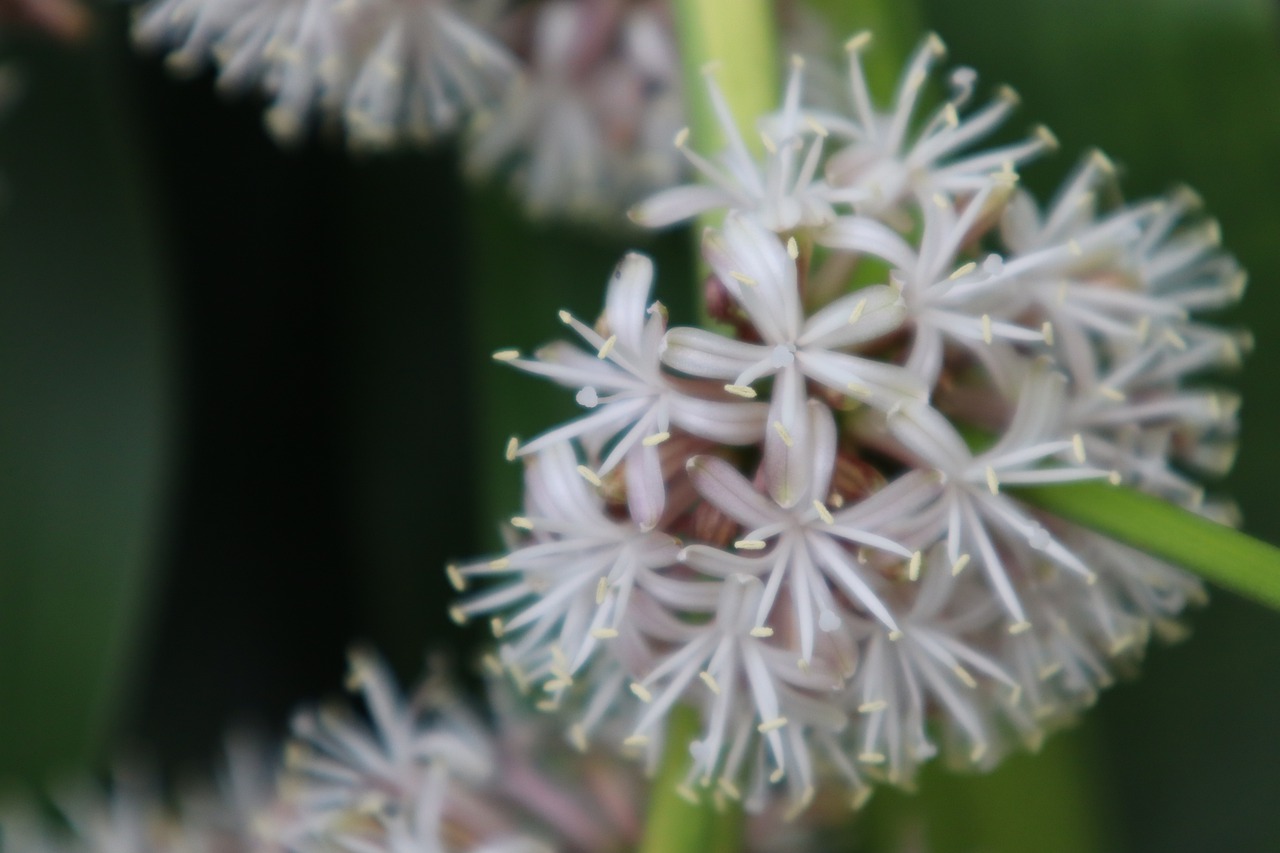Corn plants, also known as dracaenas, are laid-back plants that are easy to care for. Aside from removing dead or damaged leaves, pruning your corn plant is optional. You may even choose to let it grow one year, and prune it back the next. Although they aren’t very picky, there are a few tips to keep in mind when you’re learning how to prune a corn plant (video further below).
What You'll Learn Today
When Should I Trim My Corn Plant?

The best time to prune a corn plant is in the spring, before the growing season. Corn plants usually come out of their winter rest period in April or May.
Waiting to prune the plant until this time is a good way to promote healthy growth. Your plant will likely recover quickly from the trimming during late spring.
With that suggestion in mind, however, corn plants can generally be pruned at any time. They are fairly tough plants that can take a good amount of abuse.
How to Cut Back a Corn Plant
Pruning corn plants is a simple process. As long as you use clean garden shears or scissors to prevent spreading disease, you should start to see new growth within a couple of weeks.
1. Remove damaged leaves
First, look for leaves that are totally dead. These leaves will be completely yellow or brown, brittle, and shriveled.
You should be able to remove these leaves by gently pulling on them at the base. If they don’t easily come off, just trim them as close to the base as possible.
2. Trim the tips of the leaves that have brown tips
Find any leaves that have yellow or brown tips. Use garden shears to trim only the discolored parts, cutting at an angle that matches the ends of the rest of the leaves.
As always, make sure your garden shears are clean before you prune. Dirty shears could end up spreading disease between plants.
3. Remove or cut back stems to achieve the desired height
Where you will make a cut depends on how you want your plant to look. Some people prefer their corn plants to be compact, while others like them taller and fuller.
If you spot a stem that seems out of place aesthetically, simply trim the stem off at a 45-degree angle. The plant can be trimmed at any height, but it’s best to leave a few inches of stem on the cane.
4. Cut all of the stems in the spring to rejuvenate your plant
If your plant had a rough winter or if it was neglected for a while, it may start to look generally droopy and weak. This would be a good time to give your plant a fresh start.
All you need to do is wait until spring, and then cut all of the stems so that they are about six inches tall. Then, providing that your plant receives proper care during the growing season, you should see quick, healthy growth.
For a great visual guide on the basics of pruning corn plants, check out this video.
How Do You Revive a Dying Corn Plant?
If you’ve accidentally neglected your corn plant or inherited one that isn’t looking great, you may still be able to save it. Your remedy will depend on the symptoms of the sick plant. Here’s what you should check for:
- Brown marks on the leaves: this could be due to excess sunlight. Corn plants like bright, indirect sunlight. If your plant is close to a window that the sun shines through, move it away.
- Only the tips of the leaves are brown: you may need to adjust your watering schedule. A good rule of thumb for these plants is to water them when the top of the soil is dry to the touch
- Droopy, yellow leaves: This is typically a sign of overwatering. Again – hold off on watering until the top of the soil is dry, or root rot could become a factor. Make sure your soil is well-drained, too.
Yellowing leaves may also be due to a lack of sunlight. If your plant isn’t getting much sun, try to place it a little closer to indirect sunlight.
If you’ve cared for other plants before, you know that trial and error comes with the territory. Sometimes it takes a while to figure out what your plant likes best.
You may have to try different things and see how the plant responds. And if it doesn’t make it, don’t be too hard on yourself. We’ve all been there at some point!
Why is My Corn Plant Flowering?

Some people are surprised when their corn plant starts to flower. When it’s an indoor plant, this feeling is understandable.
Corn plants rarely flower when they’re grown indoors. For those that do, it’s not uncommon for it to happen for the first time when the plant is 10+ years old.
When a corn plant begins to flower, it’s usually a sign that the plant is happy and well cared for. If you’re sensitive to the extremely fragrant smell of the flower, however, feel free to remove it.
The easy-going, tough nature of corn plants makes them an excellent choice for beginners. It is not unheard of for these house plants to last up to 40 years with proper care.
So, even if you make a mistake while pruning your plant, chances are good that it will come back stronger than ever.
Will pruning damage my Corn plant?
No, in fact giving it a good haircut will improve the health of your plant! Trimming out old, dead or dying leaves is the best thing you can do for your plant, as it will make way for new, healthy growth.
My corn plant (indoor) bloomedast month. Surprised me bc I didn’t know they bloomed. I’ve had it 13 years and I don’t think it ever has before. It was pretty, but now they have all fallen off- should I cut off the long stem the blooms were on? Or leave it alone?
Well done, these plants only flower after decades of good care! Yes, you should cut off the stalk that the flowers grew on – leaving it will be unsightly, and will prevent the flower putting all of its energy into those gorgeous leaves.
I have a 58 yr. old corn plant that is taller than my ceiling height. This week it produced flowers that are interesting but wreaking havoc with my allergies. If I cut the floweers off & place them in the soul at the bade of the plant will it be good or bad for this old plant that was purchased by my Mother when I was 8 from a supermarket in Lake George, N. Y. This yr. I need to move & would like to find a steward to take care of it. If you are interested or have thoughts please let me know about this as well. Thanks, dave
I would snip off the flowers and dispose of them, if they are causing problems with your allergies. Putting them in the soil will not do anything exciting for the plant, so just bin them!
My corn plant is pushing against my ceiling. Should I cut it at the woody stem or further up where the leaves are?
Can i prune my corn plant from top, it was damaged when we got it from a friend, its 6ft on both stems , right growing again left is damaged , any advice welcome
Help. My 48 yr. old corn plant has been cut 5 times, but not in a while. It is pushing against my ceiling. Should I chop it at the woody stem or further up where the leaves are?
Wow, it sounds like your corn plant is super healthy! It will continue to grow if you give it a hard pruning back to the woody stem, and you can even have a go at propagating the top part that you remove so that you end up with two plants. Good luck!
My corn plant is maybe 3 years old and by my surprise it bloomed this year, I didn’t know they bloomed. My question is is it safe to cut off the stem where the blooms were growing because that part of my plant isn’t looking very happy. It is August so I’m wondering if I should just wait until spring or is it safe for me to cut it off now?